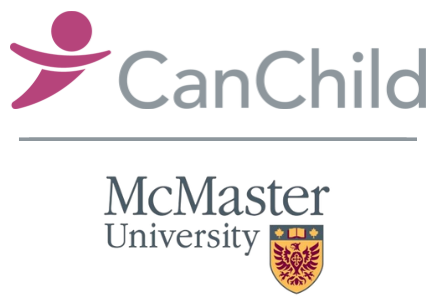Overview
Checking Up and Checking in to Keep On Track
On Track Study Results & Resources for Monitoring Developmental Progress
On Track study longitudinal trajectories and reference percentiles results fit nicely with the goals of regular check-ups and check-ins between children with cerebral palsy (CP) and their families and health care professionals: finding the balance between results of standardized assessments and individual priorities of families.
The On Track Study (2012-2017) involved 708 children with CP and their families, therapists and researchers from across Canada and the United States. The On Track study research results for children with CP give us a framework for developmental assessment, monitoring and planning of individualized care. Check-ups and check-ins help us work toward the best possible development for your child. We can work together using the On Track study research results to monitor comprehensively:
- Balance
- Range of Motion
- Impact ofHealth Conditions Associated with CP on Daily Life
- Participation in Family and Recreational Activities
- Performance in Self-care Activities
Longitudinal trajectories provide useful tools for families and therapists to discuss questions about how well children are doing on a given measure in relationship to the average values of other children with CP of similar functional ability levels (prediction and prognosis), and allow for more efficient intervention planning linked to realistic goals. They yield information about the course of development for children within a level including variability in the expected limit of the outcome and how long it takes to get there. Because of this variability, they need to be used as a prognostic guide for children’s current development and what changes might be anticipated but should not be used to evaluate an individual child’s progress over time. Therapists are encouraged to use these longitudinal trajectories to support collaborative discussions with families regarding their children’s prognosis and to proactively plan services and targeted intervention activities.
Reference percentiles can help to track children’s change across time by indicating how a child is progressing relative to peers of the same ability level and of a similar age. A single assessment permits an understanding of a child’s individual strengths and limitations related. Specifically, the reference percentiles might be useful in flagging the outcome as a potential area for intervention or, conversely, maybe to indicate that, relative to peers, this is an area of strength and not an intervention focus. However, some children and families may choose to take a ‘strengths-based approach’ and continue to focus on optimizing an area of strength. Completing a second assessment later in time provides an understanding of change in abilities over time. This comparison of percentiles allows therapists and families to determine if an individual child with CP is demonstrating scores that are progressing ‘as expected’, ‘more than expected,’ or ‘less than expected’ over time, depending on their functional ability levels. Because percentiles represent a relative standing at a moment in time, decisions about services should be supplemented with an analysis of the child’s function via examination of raw scores and the context of the testing sessions (i.e. child’s cooperation with testing, environmental distractions, etc.).
Together, we can use these results in collaborative discussions with families:
- RECORD a child’s current assessment scores and how the child is progressing in those areas, relative to what we might expect.
- DISCUSS a child’s strengths and important areas for improvement, and make notes to help individualize the child’s treatment plan.
For families who find it helpful, this type of developmental monitoring is a place to start the conversation about what we might expect to see based on assessments of children in similar functional levels of CP.
Resources for Children and Families
- Plain Language Summary of Results (English) (Spanish)
- Video Summary of Results - Watch here
Resources for Therapists
Background and Overview of On Track Study
- Part 1 Introduction and Background - Watch here
- Part 2 Methods in the On Track Study - Watch here
- Part 3 Philosophical Approach and Case Study - Watch here
Measures: Assessment Forms and Training Videos
On Track Calculator for Interpreting Developmental Progress
Quick Reference Guide for Therapist and Patient Interactions
- An Example of a Collaborative Parent-Therapist Conversation using the On Track Developmental Monitoring System for Children with Cerebral Palsy - Watch here
- Sharing the Results of the On Track Developmental Monitoring System with a Youth with Cerebral Palsy - Watch here
Resources for Administrators
Link to Public and Professional Abstracts on PCORI.org Research & Results Page
Resources for Educators
- Considerations for Pediatric Physical Therapy Curriculum Based on the Findings of the On Track Study
724 families were enrolled in the On Track Study
656 families completed the 2-visit study (2 visits across one year)
424 families completed the 5-visit study (5 visits, every 6 months from study entry)
Recruitment
Click here to see recruitment site details
Funder
CIHR (Canadian Institutes of Health Research Operating Grant MOP #119276) 2012 - 2017
PCORI (Patient-Centered Outcomes Research Institute Contract #5321) 2013 - 2016
